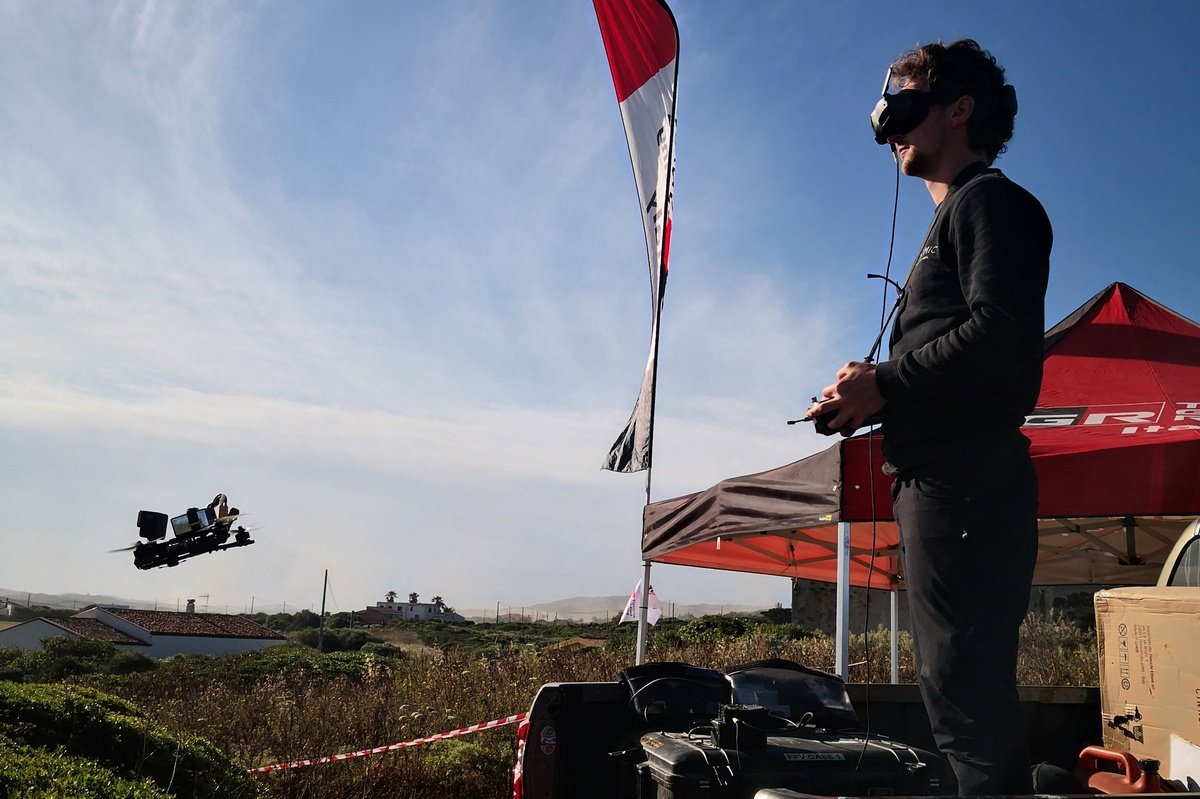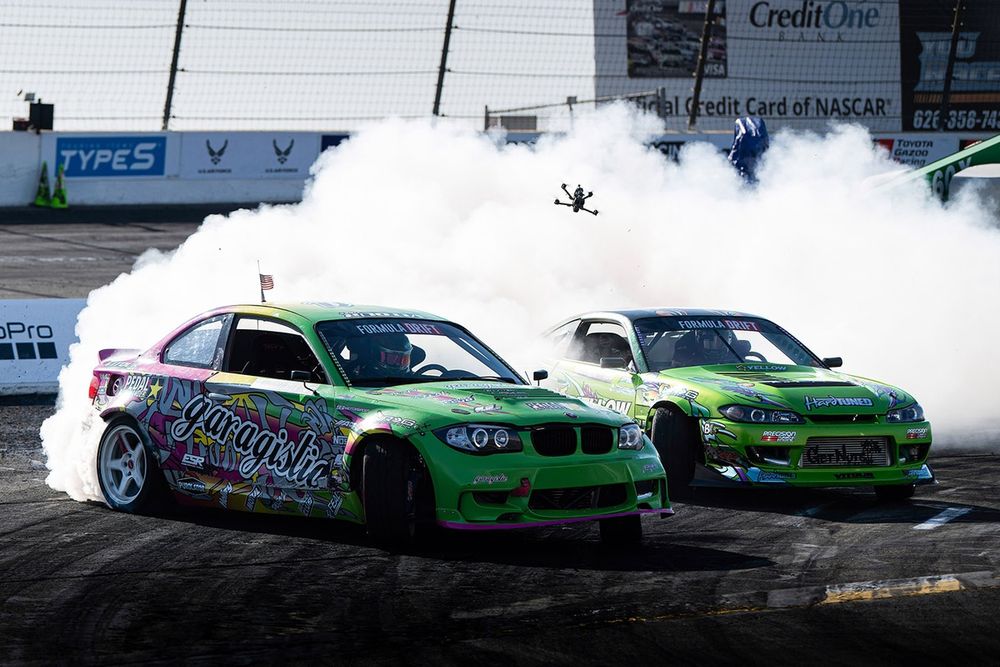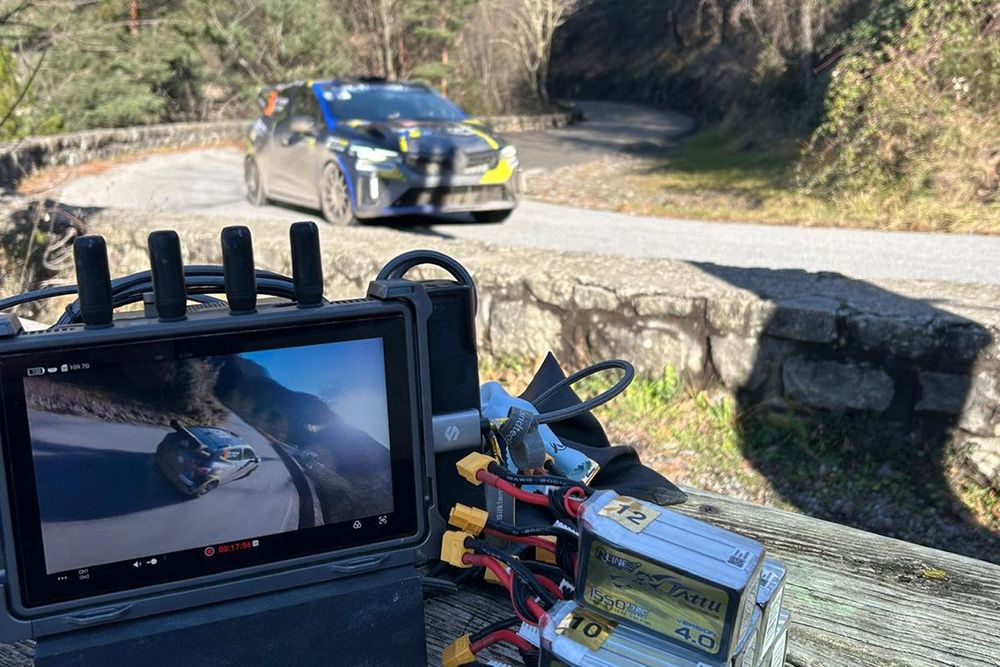
The best way that motorsport is filmed has remained largely unchanged for many years, with cameras stationed round a observe capturing static photographs and helicopters above providing a birds-eye view of the motion. Now, as cameras get smaller and lighter, highly effective drones are discovering their method into motorsport and shaking up the best way we watch.
You might need already seen a drone shot in Formula 1, because the collection makes use of flying cameras to seize new angles of assorted tracks or Wes Anderson-style photographs taken above iconic corners. Red Bull also built a camera drone that would hold tempo with its F1 vehicles, but it surely’s away from top-tier single-seater racing that drones have actually began exhibiting their promise.
“We began [using drones] initially again in 2016,” explains Florian Ruth, senior director of content material and communication on the World Rally Championship. “Within the first years, we simply used drones for post-production – so primarily targeted on highlights, for internet and social clips, and for information.
“The subsequent step was to incorporate the drones in our dwell mission. The development of LTE and particularly 5G applied sciences – and now even together with Starlink – allowed drones [to become] a vital a part of our dwell protection, like each different digital camera.”
With these cameras within the sky, drone pilots can get closer to the racing action than a helicopter would be capable of, and in addition provide new angles that different onboards can’t fairly handle.
Drones are used to movie each WRC stage
Photograph by: WRC.com
Plus, as flying cameraman Justin Skinner proves week-in, week-out in Formula Drift, they will additionally unlock photographs that administrators might solely dream of only a few years in the past.
“You get to see the motion, you get to see the nuances of the automobile transferring, the place you may’t see that from the stick cams which are across the corners,” Skinner says.
“You do not see the little adjustments of their again tyres and the way they’re dashing them up and slowing them down to manage that again finish. It simply offers much more element and it makes you’re feeling such as you’re actually part of the motion.
“I at all times say, I really feel like I’ve the very best seat in the home. I’m proper there, and I would not need to watch these occasions another method now as a result of I am spoiled.”
Skinner presently movies occasions for Formulation Drift and Nitrocross within the US, the place he says utilizing drones to get proper into the motion means you can “actually really feel and see the traces” that racers observe round a circuit.
Whereas working throughout the 2 collection, he’s stationed on observe with a small drone that may intently observe the racing vehicles whereas additionally broadcasting the feed dwell. When required by the occasion’s director, his cameras are minimize to, and he carries out a rigorously choreographed shot that goals to deliver the motion to life for viewers at house.
“Often, I get within the day earlier than and I get there after they’re warming up as effectively,” Skinner explains. “They’ve their very own warm-up classes, so their warm-up session is my recce – after I’m scouting the observe, getting my tools arrange.
“Throughout that complete time, I am additionally attending to apply with the drivers. I attempt to use that apply time to aim new angles, new entries – one thing to spice it up all through the dwell stream.”
The identical is true in World Rally, the place Ruth says his groups of drone operators apply photographs on the protection caravan, which runs via every stage earlier than the rally rolls in. These pre-race workout routines have thrown up new angles and intro photographs, like one forward of this 12 months’s Rally Portugal that noticed a drone fly via a ferris wheel to disclose the stage under.
“[It was] a tremendous opening shot,” Ruth says. “You see the wheel he drives via, and also you see the stage within the background and say ‘Whats up, welcome to Portugal’.”

Rome Charpentier, Forrest Wang
Photograph by: Jon Putman / SOPA Pictures / LightRocket by way of Getty Pictures
Advances in digital camera expertise have allowed drones to proliferate throughout collection reminiscent of WRC and Nitrocross, and whereas the tech has been used it has steadily gotten higher and extra helpful for media groups masking races. This, partially, is because of WRC’s personal collaboration with drone maker DJI, which trialled its newest package in all the things from the frozen north to the deserts of Africa.
Now, different championships are taking an curiosity, and Skinner says he beforehand held talks with Formulation E to deliver his distinctive protection to the collection. Nevertheless, security issues imply that that is but to occur.
“We simply attempt to hold it as secure as potential,” Skinner explains. “My drone has GPS rescue in case one thing occurs it will possibly, form of like an ordinary DJI drone or videography drone, it will possibly return to house.
“If one thing was to go down, go fallacious with the drone, the protocol is to land it as safely as I can on the observe – on the sides – in order that one of many observe members can retrieve the drone if needed.”
Nevertheless, he admits that challenges stay for open-cockpit races, including in series such as F1, Formulation E and IndyCar.

Flying cameras provide up new angles
Photograph by: WRC.com
“Proper now, the tough and tumble collection appear to have adopted [drones] loads simpler, as a result of they’re already absolutely lined vehicles,” he explains. “They’re as secure as they are often.
“The largest security subject, actually, would come right down to, and it at all times will get introduced up, is that possibly it might pop a tyre if it will get down on the observe. However a lot of the stuff isn’t going to pop a tyre.”
This doesn’t imply Skinner is ruling out an FPV drone one day being used by production crews in F1 or IndyCar, and Ruth additionally believes it’s inevitable that collection like it will quickly embrace drones as effectively – simply as quickly because the tech has been refined a bit of extra.
“We, kind of, are the proper take a look at laboratory for evolving applied sciences,” provides Ruth.
“With our all-live idea, we broadcast over 20 hours per rally, so we simply have the alternatives inside our broadcast to check all the things. We’re doing a number of assessments, and when it really works, we put it in our programme.

Drones can get a lot nearer to the motion than a helicopter might
Photograph by: WRC.com
“I am fairly a giant fan of trial and error, and when the expertise is ok and as much as our requirements then, more often than not, I’ve used it a lot earlier in our broadcast than anybody would have thought.”
As soon as this occurs and different collection start rolling out or experimenting with drone cameras, Ruth believes that the best way motorsport is loved at house will change dramatically with new angles, new cameras and extra immersive methods of watching.
Nevertheless, this doesn’t imply your weekend broadcasts are about to alter past recognition.
“I believe the bottom cameras and close-up motion photographs, they are going to be wanted for a very long time,” Ruth says. “And for helicopters, till the drones have such a attain and such a length, helicopters will probably be wanted.
“However all the things is evolving and enhancing, and I am positive that the protection in eight to 10 years’ time will look totally different than it’s now.”
On this article
Be the primary to know and subscribe for real-time information e mail updates on these matters
Trending Products




